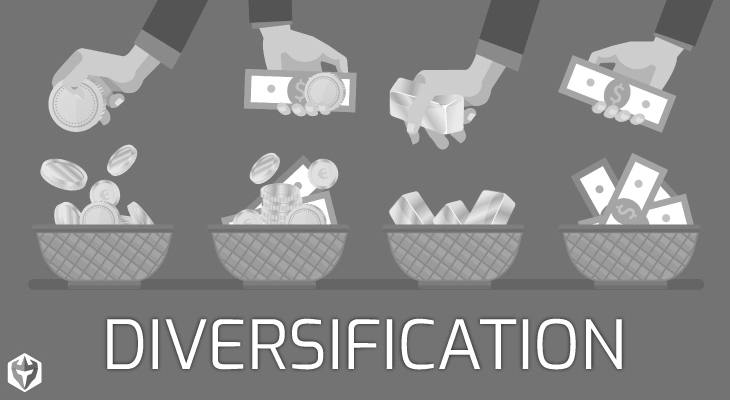Introduction
In the realm of decision-making, the mental model of diversification plays a significant role. Diversification refers to the practice of spreading one’s resources, efforts, or investments across a range of options or areas. It is a strategy employed to reduce risk, increase opportunities, and achieve a sense of security. Anchored in human psychology, this mental model often influences our choices in personal life, business scenarios, and even public policy-making. Understanding the dynamics of diversification is crucial for making informed decisions and avoiding potential pitfalls.
Defining Diversification and Its Relevance
Diversification involves allocating resources or investments across multiple options to minimize the impact of any single failure or loss. This approach recognizes that placing all our eggs in one basket can be risky and that spreading resources can provide a higher likelihood of achieving desired outcomes. The relevance of diversification in decision-making lies in its ability to balance the pursuit of variety and exploration with the need for value, stability, and long-term success.
Anchoring in Human Psychology and Prevalence in Daily Life
The tendency towards diversification is deeply rooted in human psychology. Our cognitive biases, such as aversion to loss, desire for variety, and the fear of missing out, drive us towards exploring multiple options. Diversification is prevalent in our day-to-day lives, influencing choices ranging from investment portfolios to career paths and even our daily routines. The allure of diversification stems from our desire to mitigate risk and maximize potential gains, often leading us to make decisions that may not align with our best interests.
Examples of Diversification in Different Contexts
- Personal Life: Consider an individual who is exploring potential career options. Rather than committing to a single path and developing expertise in a specific domain, they may succumb to the temptation of diversification. They pursue multiple career paths simultaneously, hoping to gain a wider range of experiences and opportunities. However, by spreading their efforts thin, they may fail to develop deep expertise in any particular field, hindering their long-term growth and professional success.
- Business Scenarios: In the business world, diversification can manifest as companies expanding into multiple markets or offering a wide array of products and services. While this approach aims to capture a larger market share and reduce reliance on a single market or product, it can lead to dilution of resources, decreased focus, and increased complexity. By trying to do too much, businesses may fail to excel in any particular area, resulting in diminished performance and competitive disadvantage.
- Public Policy-making: Diversification can also influence public policy decisions. Governments may allocate resources across various sectors or initiatives to cater to a diverse range of societal needs. However, by spreading resources thinly, there is a risk of inadequate funding and limited impact. This may result in suboptimal outcomes, as the resources allocated may not be sufficient to drive significant change or address critical challenges effectively.
Mental Biases and Psychological Underpinnings of Diversification
Several cognitive biases contribute to the prevalence of diversification and its potential pitfalls:
- Loss Aversion: Loss aversion bias leads individuals to prioritize avoiding losses over achieving gains. This bias drives us to diversify our resources, as it provides a sense of security and minimizes the risk of experiencing significant losses. However, excessive diversification can dilute potential gains and limit the ability to capitalize on focused opportunities.
- The Illusion of Control: The illusion of control bias leads us to believe that we have more control over outcomes than we actually do. When diversifying, individuals may perceive that spreading their resources across multiple options gives them greater control and reduces the impact of external factors. However, this bias may result in overestimating our ability to manage and influence outcomes, potentially leading to poor decision-making.
- Herd Mentality: Herd mentality bias refers to the tendency to follow the actions or decisions of the majority. In the context of diversification, individuals may succumb to the fear of missing out and follow the crowd’s approach of spreading resources across various options. This can create a cycle where everyone diversifies, without critical evaluation of whether it aligns with their specific goals and circumstances.
Identifying and Avoiding the Diversification Trap
To navigate the diversification trap effectively, individuals can employ the following strategies:
- Define clear goals and priorities: Clarify your objectives and identify what truly matters to you. Focus on areas that align with your values, strengths, and long-term aspirations. By setting clear goals, you can resist the temptation of diversification for its own sake and make informed decisions that maximize value and personal fulfillment.
- Evaluate risk-reward trade-offs: Consider the potential risks and rewards associated with each option. Assess whether diversification is genuinely necessary to manage risk or if it compromises the potential for significant gains. Perform a cost-benefit analysis and prioritize quality over quantity to ensure optimal resource allocation.
- Embrace strategic focus and specialization: Emphasize deep expertise and focus on specific areas where you can excel. By concentrating your efforts, you increase the likelihood of achieving mastery and reaping substantial rewards. Strategic focus allows for targeted investments, better utilization of resources, and a higher potential for success.
Conclusion
Diversification, as a mental model, offers a balance between risk management and exploration of new opportunities. However, it is essential to understand the psychological underpinnings, biases, and potential drawbacks of diversification to make informed decisions. By defining clear goals, evaluating risk-reward trade-offs, and embracing strategic focus, individuals can avoid the diversification trap and optimize their chances of achieving long-term success.
Awareness and active avoidance of the diversification fallacy empower individuals to make deliberate and strategic choices that align with their best interests. By embracing the value of focused effort and mindful decision-making, we can harness the benefits of diversification while avoiding the pitfalls of dilution, limited focus, and missed opportunities.
